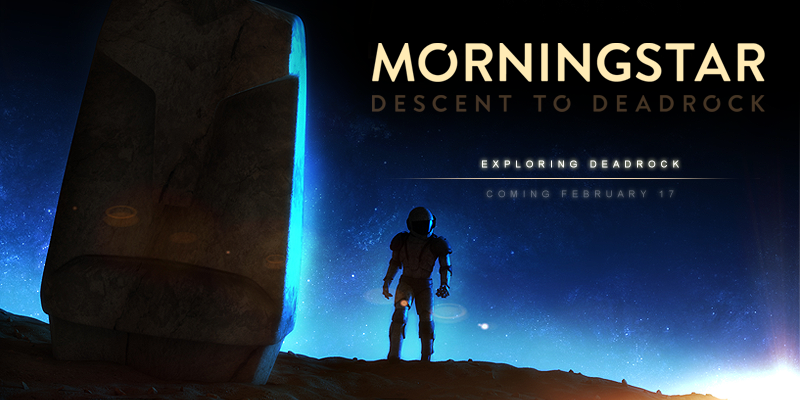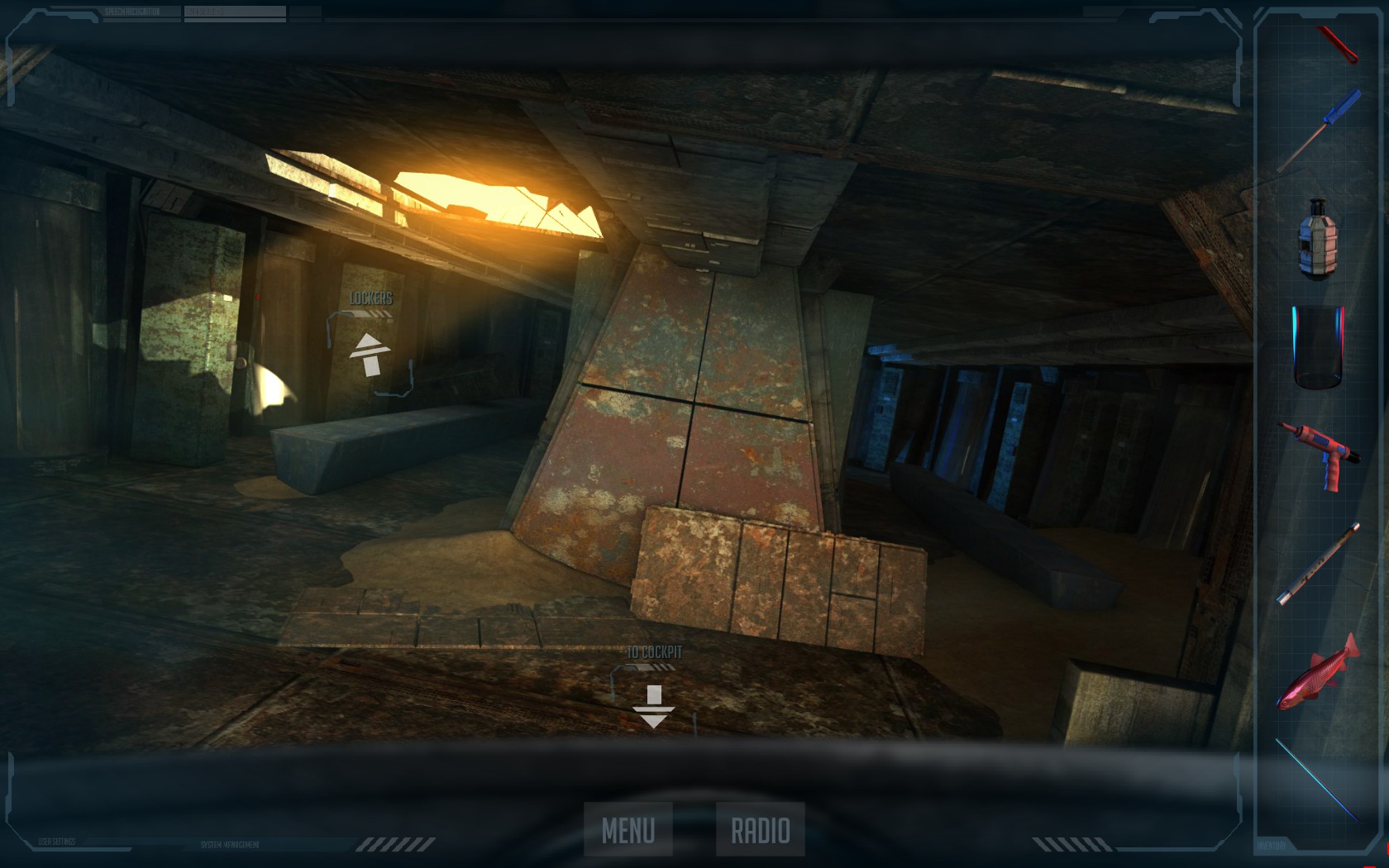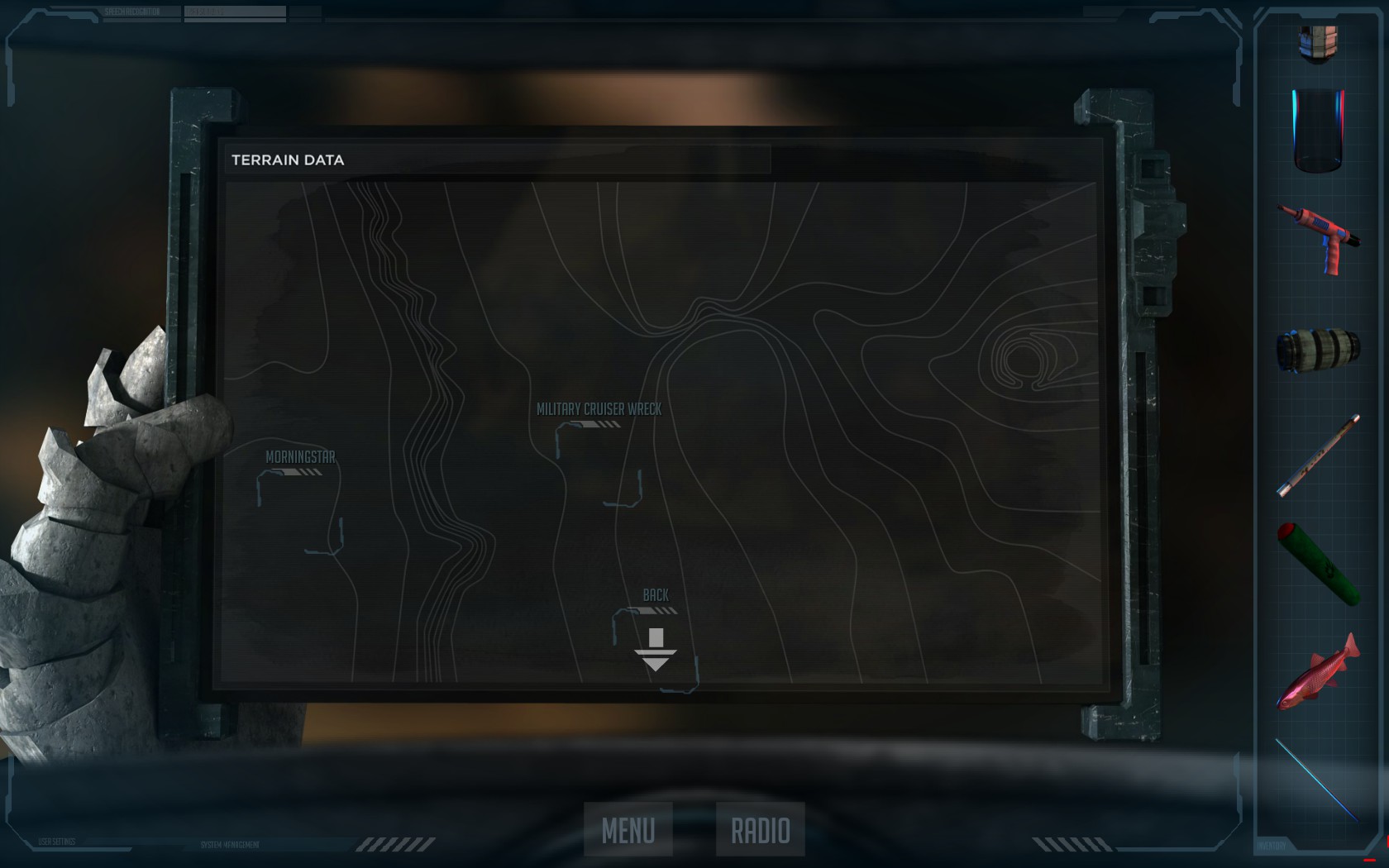Morningstar: Exploring Deadrock
by stika on Feb.10, 2015, under featured, Morningstar
Morningstar uses a first-person interface, meaning that the entire game is seen through the eyes of our protagonist Powell. More precisely, it’s seen through the visor of his suit’s helmet display system. As such, you never see what he looks like and you’re only able to tell that he’s male by the voice-over. Without it, Powell could be either gender. It would be hard to figure this out otherwise even if it was in a third-person viewpoint as the visor is darkened from the outside as shown in Captain Novak’s sprite sitting in the ship’s cockpit.
Every screen is static, allowing transition from one scene to the next to be seamless. It does mean that Powell is never seen moving about but rather when clicking on the “move” arrow on certain hotspots it’s an instantaneous change. For those who have played other first-person games like the Myst series it works essentially the same way. The crosshairs serving as the cursor icon will change to an red arrow outline when you move the mouse over these hotspots.
Speaking of hotspots, there is no need for pixel hunting or pressing the spacebar to highlight them. Just roll the cursor over interactable objects and the suit’s heads-up display will automatically mark it for future use. And it will stay highlighted throughout the entire game until whatever needs to be done with it is completed. A lot of the time these are objects that can be collected and added to your inventory. For others they’re part of a puzzle that usually require the use of one or more inventory items.
Picking up objects and examining non-room hotspots are done the same way. You mouse over them and click. Items that can be grabbed are automatically added to the inventory after a pop-up shows what you snatched. In a few cases, namely the game’s equivalent of a PDA, it even gives you some backstory of the doomed crew of the Armstrong, the other ship that crashed on Deadrock. They can even open up other areas to explore after being read. And almost every item has a use. There is one red herring, though, that you never figure out a use for.
When an item is picked up it is automatically added to your inventory. The inventory itself is always shown on the right-hand side of the screen. Your map, which is used to travel from one area to the next, is always at the top. When you have more items than shown you can scroll either by clicking on the arrow or by using the mouse wheel. To use an item, all you have to do is “click and drag” it to the hotspot on the screen or on another item in your inventory. The latter, if compatible, will combine the objects together to make a new item. Some even require multiple combinations to be useful.

Serena Nelson
Social Media Intern
Phoenix Online Studios



